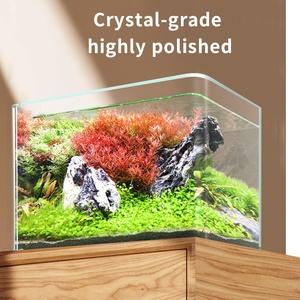Introduction to Type Fish Tanks
Type fish tanks are essential components for any aquarist or fish enthusiast. These aquatic environments are not only home to a diverse array of beautiful aquatic life but are also crucial for maintaining the well-being of these creatures. The selection of type fish tanks available in the market varies greatly, offering multiple choices based on size, design, and functionality. Understanding the nuances of different types fish tanks will help you select the ideal setup for your aquatic ecosystem.
Types of Type Fish Tanks
In the world of aquariums, there are several predominant types of type fish tanks you should consider:
- Freshwater Tanks: These tanks are designed to hold freshwater fish and plants. They are typically easier to maintain than saltwater tanks and are ideal for beginners.
- Saltwater Tanks: These tanks require specific salinity levels and are meant to house marine fish and invertebrates. They offer stunning visual displays but demand more expertise in care and maintenance.
- Brackish Tanks: A hybrid of freshwater and saltwater environments, brackish tanks are meant for species that thrive in mixed salinity conditions.
- Reef Tanks: Specifically designed for coral reefs, these tanks allow for a highly diverse and visually captivating display of marine life.
- Biotope Tanks: These aim to replicate a specific natural habitat, providing appropriate conditions for all the inhabitants.
Function and Feature of Type Fish Tanks
Type fish tanks provide multiple functions and come equipped with various features that enhance the experience for both the aquarist and the fish:
- Filtration Systems: Most type fish tanks include robust filtration systems to maintain water clarity and quality, ensuring a healthy environment for your fish.
- Heating Elements: For tropical fish, proper temperature regulation is crucial; hence many tanks come with integrated heaters or options to include them.
- Lighting: Specialized lighting helps sustain aquatic plants and showcases fish beautifully, mimicking their natural light conditions.
- Aquascaping Options: Many fish tanks allow for customization with decorations, substrates, and plants, enabling aquarists to create stunning underwater landscapes.
- Size Variations: Fish tanks are available in various sizes, from small nano aquariums to large display tanks, catering to diverse preferences and spaces.
Applications of Type Fish Tanks
The applications of type fish tanks extend beyond aesthetic enjoyment, playing integral roles in various sectors:
- Home Aquariums: Used primarily for personal enjoyment, these tanks provide a serene atmosphere and companionship through pet fish.
- Educational Institutions: Many schools and universities utilize type fish tanks as educational tools to teach students about marine biology and ecosystems.
- Aquatic Research: Research facilities use specialized tanks for studies on aquatic life, water chemistry, and the impact of environmental changes.
- Public Aquariums: Large public attractions often feature type fish tanks to provide communities with an engaging and informative aquatic experience.
- Breeding Facilities: Specific tanks are designed for breeding fish, ensuring ideal conditions for reproduction and fry development.
Advantages of Type Fish Tanks
When investing in type fish tanks, it’s important to understand the advantages they offer:
- Visual Appeal: Fish tanks add a beautiful, calming element to any space, becoming a focal point of interest.
- Stress Relief: Observing fish in a well-maintained tank can reduce anxiety and stress, promoting overall mental health.
- Educational Benefits: Type fish tanks foster learning about ecosystems, responsibility, and biology, making them great for families.
- Diverse Environment: They provide habitats for various fish and plant species, encouraging biodiversity.
- Customization: With various types available, enthusiasts can choose from an array of setups to meet their specific aesthetic and care preferences.





















































